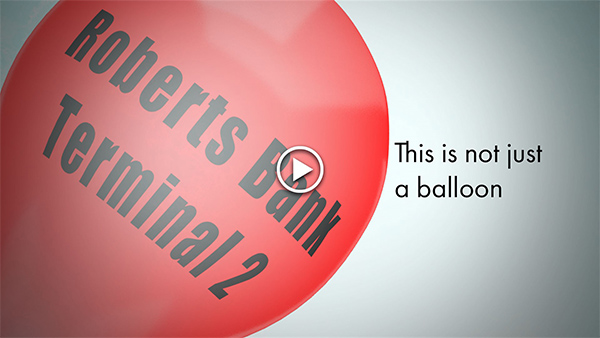The Government of Canada should think twice about how to respond to the Port of Vancouver’s campaign to secure federal economic stimulus monies for its expansion project at Roberts Bank in B.C.
For one thing, it is not environmentally friendly. The Port proposes to build a massive, artificial Terminal island (RBT2, they call it), the size of 150 football fields, pushing out into the open ocean (the ecologically sensitive Salish Sea). The Government of Canada should not support economic stimulus projects that create unnecessary impacts on the environment, yet RBT2 comes loaded with high risk impacts on Indigenous fishing grounds, on migratory shorebirds, and on crabs, salmon and killer whales.
For another, the Port is basing its plans on dated and inaccurate projections. When the current version of the project was first released in 2013, they claimed it would cost roughly $2.4-billion. The most recent estimates have the project pegged at $3.5-billion. And with the start of construction still two years off, costs could go over $4-billion—a whole lot of public money.
Another Port projection that has been way off is the anticipated growth in container volumes. In January 2010, the Port said the number of containers on the West Coast would double over the next 10 years. But actual growth is more than a million containers shy of their projection. This is no rounding error. To put it into context, the gap between projection and actual is the entire current capacity of the Centerm container terminal in Port of Vancouver. And it’s a gap that may grow bigger once the impact of the global pandemic gets factored in.
Once you build an enormous and enormously expensive artificial Terminal island, it’s there, isn’t it? Even if the capacity growth you planned for never comes to pass. If RBT2 is permitted by (and funded by) the government, it will bring on a glut of capacity, all at once, creating an uncompetitive Port at huge financial and environmental risk.
Risking taxpayer dollars right now on a massive project like RBT2, with its inflating costs and unrealistic projections, is not wise. Public monies are much better utilized on public priorities, especially during this economic recovery when the Government of Canada should prioritize spending on the health and economic security of Canadian families.
And why even consider spending public resources when the private sector is standing by and ready to invest? Dubai Ports World, operator of terminals in Vancouver and Prince Rupert, is investing in an expansion of its terminals, and GCT Global Container Terminals, a Canadian operator with a history of successful incremental expansions under its belt, is hoping that its own proposal for a smart, phased, environmentally-conscious expansion can get a fair review.
The Port of Vancouver argues that time is of the essence, but the softer growth numbers indicate there is time for reflection. When big infrastructure projects are being planned, it is important that the government take the time needed to make the right decision.
Massive, inflexible megaprojects based on dated and inaccurate projections are not good economic stimulus propositions. Never mind shovel ready, they are simply not shovel worthy. Smarter, incremental, more environmentally sound infrastructure, where risk is borne by the private sector should be preferred not only by Canadians but by their government.
Roger Emsley is the director of Emsley Management and a resident of the City of Delta, B.C.
Watch: Canadian taxpayer dollars are ballooning with Port of Vancouver's megaproject
